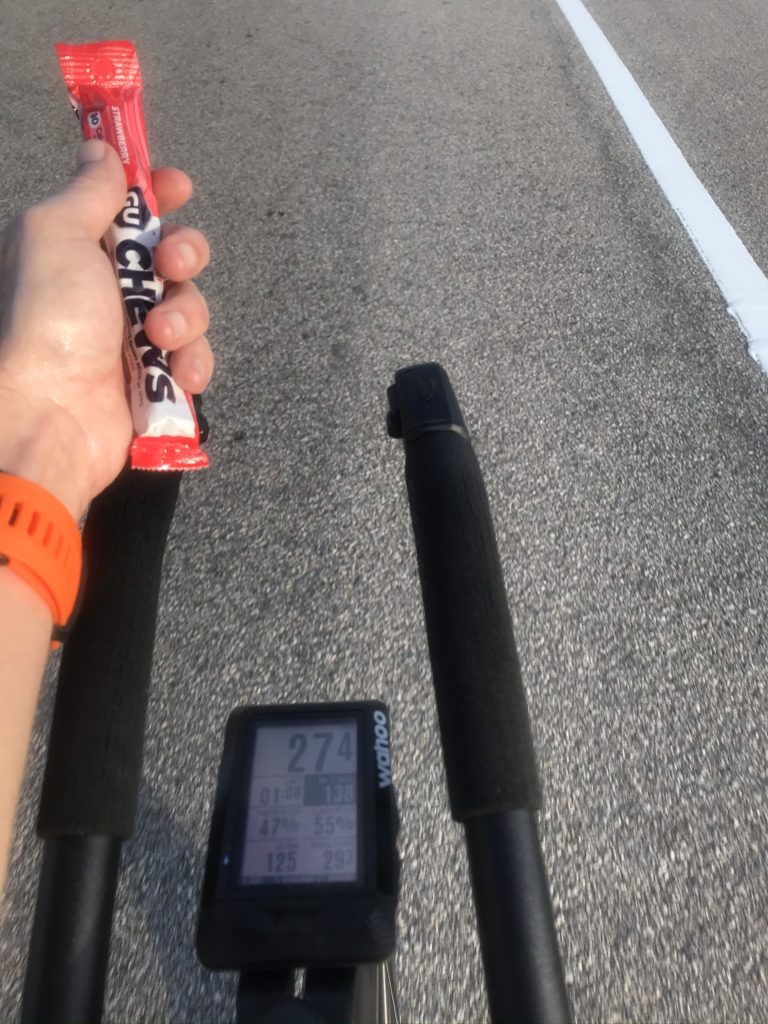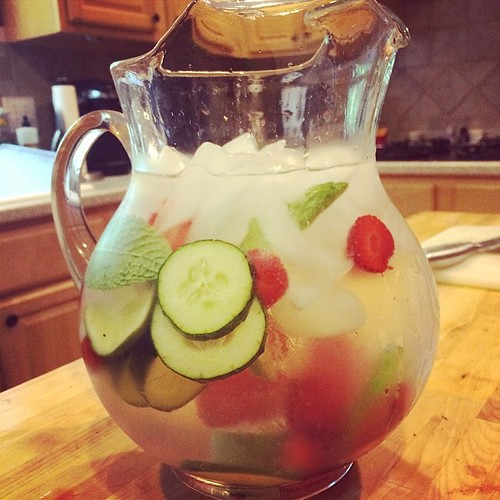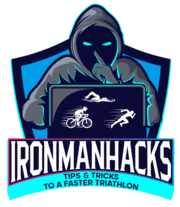I’ll be the first to admit it: I love commercial nutrition products. The taste of that peanut butter gel or the feel of that sweet chew always makes me happy.
Breaking open a new product and then getting blown away by the amazing flavor (EM’s I’m talking to you) is a fringe benefit of those long endurance sessions.

I’ve even used gels as a lure to my kids to get them off the iPad and to get them cycling on Sunday mornings.
“I’ll give you a gel if you ride with me,” has worked wonders on lazy 12 year-olds.
But what if I could concoct them myself, at a fraction of the price? Is it even reasonable to think that we can do this at home?
Apparently, yes, it is.

All you need, according to Dr. Alex Harrison, from Renaissance Periodization, is the following:
- Glucose
- Fructose
- Sodium
- Flavor (optional but highly desirable)
- Caffeine (optional, and very individual)
- Preservative (optional)
Let’s take these one at a time.
Carbs
You may know that glucose + fructose = sucrose. So, you can solve for the first two items simply by getting sucrose, or table sugar. These are your carbs, calories, and sweetener.
A tablespoon of sugar is about 11 carbs, and 49 calories. It may be easier to think if it as 10 carbs and 50 calories.

But items 1 and 2 are glucose and fructose, not carbs. So why do you need both glucose and fructose?
Dr. Harrison says, “I use straight granulated table sugar because it’s a 1:1 glucose:fructose ratio, which is optimal.”
Sports nutritionist Leslie Bonci, MPH, RD, agrees, “A mix of carbohydrate, like sucrose, which is actually two sugars—glucose plus fructose—may be more efficiently used by your muscles during exercise than a single source such as glucose.”
“Use table sugar for 80% of intra-workout carbs,” Harrison explains.
“Flavor with whatever beverage you typically use. Saves big money, keeps flavor mild, and moves sugar composition closer to 1:1 glucose:fructose, which is probably more ideal than the 2:1 (or worse) that is in most drink mixes,” he continues.
So Dr. Harrison is saying you can just add sugar to basic Gatorade, for example, instead of using the much more expensive Gatorade Endurance.
Sodium
Third is sodium. You probably know that salt is NaCl, or simply sodium + chloride. Salt is about 40% sodium and 60% chloride.

This means that one teaspoon of salt has about 2,325 mg of sodium. Compare that to one sodium tablet, sachet, or capsule from Precision Hydration 1500, which has “only” 750 mg of sodium.
Other sources of sodium include sodium citrate and sodium alginate.
Sodium citrate can easily be bought online (see this Amazon product Dr. Harrison has tried) or look for it from commercial food suppliers.
“In more extreme cases (hotter, more humid, very long-duration and high-effort) you may need to make a one-time purchase of sodium citrate (Amazon) to meet high sodium needs while allowing maximum hydration with reduced osmolarity,” Dr Harrison adds.
Not only is it a source of sodium, but sodium citrate is a food additive that is also used for flavor and as a preservative. Many commercial drink mixes, jams, cheeses, and soft drinks use it.
Sodium alginate, according to Dr. Harrison is another example. Hoewever, he explains that it is, “Expensive sodium purported to form a gel, which has been tested and makes utterly no difference in absorption and gut tolerance, much the opposite of what Maurten claims.”
“And it’s 1:1 sodium:alginate, rather than 3:1 sodium:citrate. This makes sodium alginate worse for osmolarity concerns, ironically.”
“Cost for table salt = less than $0.01 per 2000 mg sodium (sufficient for most folks 2-3-hr training, ~1 tsp)”
“Cost for sodium citrate = $0.10 per 2000 mg sodium serving (~1.75 tsp).”
“Cheapest Gatorade Endurance Powder = $2.75 per 2000 mg sodium.”
Taste

Fourth is flavor. Good taste does a whole lot for morale and spirits when you’re 150 km into a ride.
Dr. Harrison states, “Flavor should be milder the longer the endurance session lasts and the more dehydrated a person gets. More subdued flavors are preferred more highly by most folks and consumed in larger quantities by self-selection of quantity/frequency consumption studies.”
Some brands are quite aware of this, like PURE. Their subtle flavors could be a really good base if you needed to add sodium or carbs.
But other brands’ flavors are so intense that they render themselves entirely inedible at a certain point.
That’s why gels at the end of the bike or in the run of an Ironman are probably so revolting to some – their overpowering flavors become unpalatable under massive fatigue and dehydration.
Great flavors you can add include citrus fruits, berries, or even honey or syrup – but these would all count as carbs and sugars, too.
These recipes include other ingredients like watermelon, mint, ginger, and even cayenne pepper.
Caffeine

Next is caffeine. I’ve been critical of many endurance products that claim to contain caffeine. The vast majority of them have such paltry caffeine quantities that they are useless to many.
But like I said, this is a really individual thing. Different people react differently to caffeine and what may have no effect on me could give someone else the jitters. But still, I’ve only really found a few products with 80-100 mg of caffeine, which is still not much.
Dr. Harrison stated, “Caffeine has the following beneficial qualities, with very limited side-effects, assuming it doesn’t reduce your sleep quantity or quality:
- Mood enhancer
- Appetite suppressant (not good during endurance but an acceptable trade-off)
- Alertness aid / energy booster
- Mild performance enhancer for strength and endurance via multiple mechanisms”
You can add caffeine from caffeine supplements. Amazon has plenty to choose from.
Just break open the capsules and let them dissolve in the drink.
I wonder if a few scoops of instant coffee would work, too? This would offer some flavoring as well, but it may or may not work with some other ingredients.
Preservatives. I’ll ignore these for now, as the idea here is making homemade batches, not anything that you’ll want to ship or keep for long periods. That said, sodium citrate has some preservative benefits.
Conclusion

Is it really as simple as mixing salt and sugar in a bottle and riding?
Yes, kind of, if you can palate that.
But I have tried just mixing a 1:2 ratio of salt:sugar and it’s pretty hard to take. Just tastes like saltwater. I don’t advise this.
However, a salt-sugar solution is a good base. From there, add things like juice concentrate, food flavoring like vanilla, or lemon-lime-orange-pineapple-watermelon-whatever-infused water you let sit overnight.

Here’s what I’d go with, for a 3-hour bottle:
Sugar: 17 tablespoons (204 g of carbs, or 68 per hour; and 833 calories, or 278 per hour).
Salt: 2 teaspoons (4,650 mg of sodium, or 1,550 mg per hour).
Note that this is quite a lot, but it’s what I need in my climate. You may only need 1 teaspoon if you’re not a heavy sweater or if you’re not in the tropics. If I were doing a run after, I’d even take 4 teaspoons of salt.

Flavor: Fruit infused water like in the image above. Other options are food concentrates, like vanilla; you could also consider lemon/lime flavoring that comes in a bottle.
Dr. Harrison’s solution is way simpler – he just adds sugar and salt to Gatorade.
Here he presents two simple recipes, both suitable for three-hour session.
“Use one large scoop of regular Gatorade, about 1.2 cups of sugar, and 1/2 tsp each of table salt and sodium citrate, plus one caffeine pill. Cost = ~$0.67.”
“Or you can go with simply adding salt and caffeine to something like Gatorade Endurance + Gatorade. Mix 50-50 Gatorade and Gatorade Endurance, a 1/2 tsp of salt and another of sodium citrate, then some caffeine. Cost = ~$4.75-6.50.”
“Even the second recipe is is probably half the cost of what you’d normally pay for pre-mixed fuels,” he elaborates.
If you like the hybrid approach of modifying an existing product, you could also try using UCAN Plain SuperStarch or CarboPro. Neither of these has much or any flavor so they can be treated as an ingredient. From here, modify the amount of salt and sugar you want to add, along with any kind of flavor.
So while pre-packaged products are certainly more convenient, they are much more expensive and may not meet your individual needs. If you know your hourly needs, especially for sodium, you may be in a good position to create your own mixture.
A good place to start is the IronmanHacks nutrition calculator here. Simply enter the druation of your bike or run, the calories, carbs, and sodium you need per hour, and then choose the products you wish.

I have added table salt and sugar to the calculator so you could choose, for example, Gatorade, 3 teaspoons of salt, 8 tablespoons of sugar and get the breakdown.
Or you could do it without the Gatorade but it’ll taste nasty, but you can add your own flavors separately.
Happy mixing.
Thanks to Dr. Alex Harrison.
Follow Alex Harrison on Instagram here.

Leave a Reply
You must be logged in to post a comment.